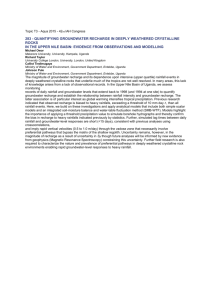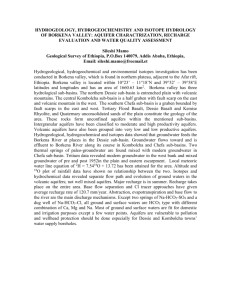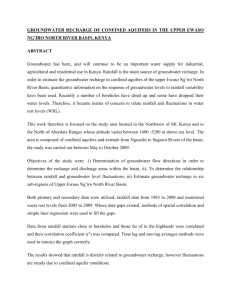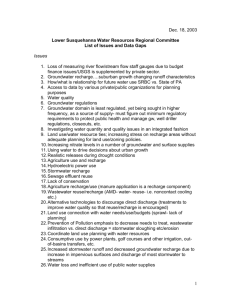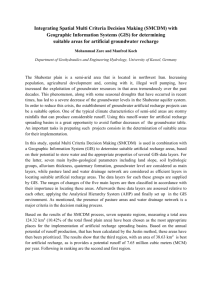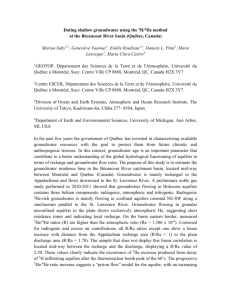Mechanisms of groundwater recharge from hill country in the
advertisement
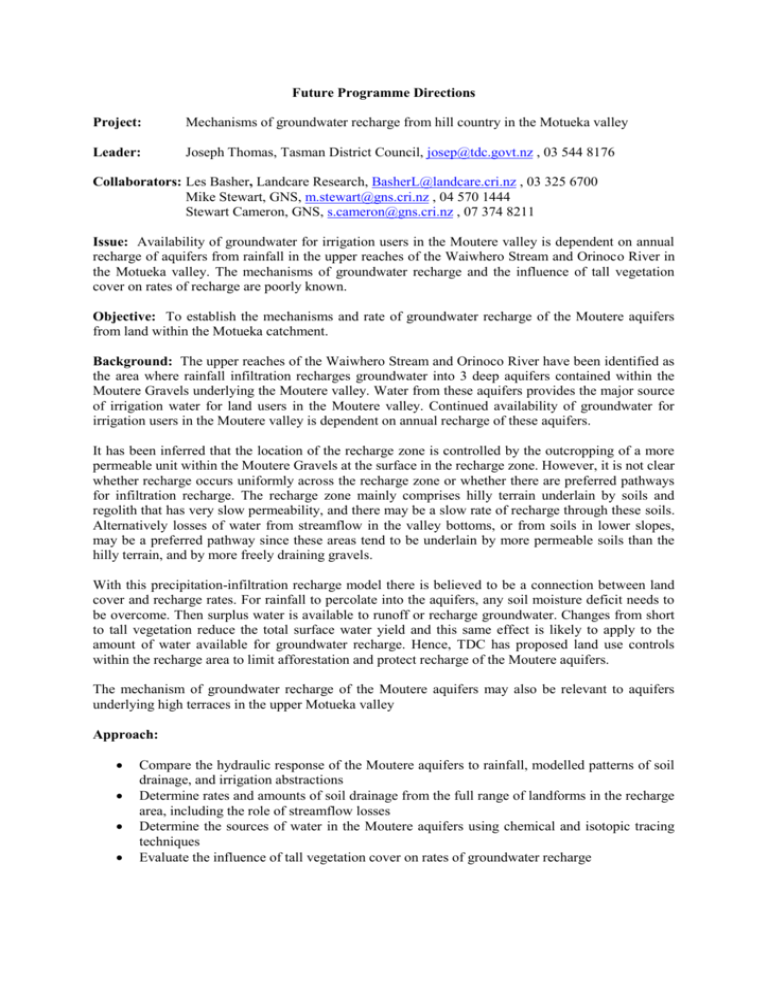
Future Programme Directions Project: Mechanisms of groundwater recharge from hill country in the Motueka valley Leader: Joseph Thomas, Tasman District Council, josep@tdc.govt.nz , 03 544 8176 Collaborators: Les Basher, Landcare Research, BasherL@landcare.cri.nz , 03 325 6700 Mike Stewart, GNS, m.stewart@gns.cri.nz , 04 570 1444 Stewart Cameron, GNS, s.cameron@gns.cri.nz , 07 374 8211 Issue: Availability of groundwater for irrigation users in the Moutere valley is dependent on annual recharge of aquifers from rainfall in the upper reaches of the Waiwhero Stream and Orinoco River in the Motueka valley. The mechanisms of groundwater recharge and the influence of tall vegetation cover on rates of recharge are poorly known. Objective: To establish the mechanisms and rate of groundwater recharge of the Moutere aquifers from land within the Motueka catchment. Background: The upper reaches of the Waiwhero Stream and Orinoco River have been identified as the area where rainfall infiltration recharges groundwater into 3 deep aquifers contained within the Moutere Gravels underlying the Moutere valley. Water from these aquifers provides the major source of irrigation water for land users in the Moutere valley. Continued availability of groundwater for irrigation users in the Moutere valley is dependent on annual recharge of these aquifers. It has been inferred that the location of the recharge zone is controlled by the outcropping of a more permeable unit within the Moutere Gravels at the surface in the recharge zone. However, it is not clear whether recharge occurs uniformly across the recharge zone or whether there are preferred pathways for infiltration recharge. The recharge zone mainly comprises hilly terrain underlain by soils and regolith that has very slow permeability, and there may be a slow rate of recharge through these soils. Alternatively losses of water from streamflow in the valley bottoms, or from soils in lower slopes, may be a preferred pathway since these areas tend to be underlain by more permeable soils than the hilly terrain, and by more freely draining gravels. With this precipitation-infiltration recharge model there is believed to be a connection between land cover and recharge rates. For rainfall to percolate into the aquifers, any soil moisture deficit needs to be overcome. Then surplus water is available to runoff or recharge groundwater. Changes from short to tall vegetation reduce the total surface water yield and this same effect is likely to apply to the amount of water available for groundwater recharge. Hence, TDC has proposed land use controls within the recharge area to limit afforestation and protect recharge of the Moutere aquifers. The mechanism of groundwater recharge of the Moutere aquifers may also be relevant to aquifers underlying high terraces in the upper Motueka valley Approach: Compare the hydraulic response of the Moutere aquifers to rainfall, modelled patterns of soil drainage, and irrigation abstractions Determine rates and amounts of soil drainage from the full range of landforms in the recharge area, including the role of streamflow losses Determine the sources of water in the Moutere aquifers using chemical and isotopic tracing techniques Evaluate the influence of tall vegetation cover on rates of groundwater recharge Outputs and outcomes: The findings from this work would be reported through written publications, a workshop with interested stakeholders and incorporated into policies and practices for the management of the aquifers to provide a sustainable water source.

